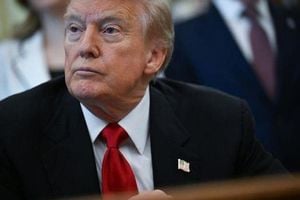On September 29, 2025, the United States Supreme Court marked a momentous milestone: the twentieth anniversary of John Roberts’ swearing-in as Chief Justice. Yet, as the Court entered its third decade under Roberts’ leadership, it found itself facing a crisis of confidence and legitimacy, with public approval ratings at historic lows and its decisions sparking fierce debate across the political spectrum. The past week alone saw the Court issue a series of high-stakes rulings that further fueled these divisions, underscoring just how contentious—and consequential—the Roberts Court has become.
Chief Justice Roberts, who assumed the center seat in 2005, once promised a collegial, consensus-driven Court that would steer clear of unnecessary controversy. As quoted in One First, Roberts famously declared, “If it’s not necessary to decide more to dispose of a case, in my view it is necessary not to decide more.” But the past twenty years have seen the Court increasingly embroiled in the nation’s most polarizing political and social battles, often moving the law sharply to the right and, at times, upending longstanding precedents.
Nowhere was this more apparent than in the Supreme Court’s June 27, 2025, decision in Trump v. CASA, Inc.—a ruling that eliminated the judiciary’s power to issue universal injunctions. These court orders, which had become a hallmark of judicial resistance to executive overreach (especially during both of President Donald Trump’s terms), allowed judges to block enforcement of a federal policy nationwide, not just for the parties involved in a lawsuit.
The controversy began on January 20, 2025, just hours after President Trump’s second inauguration, when he signed an executive order targeting birthright citizenship—a move that, as One First and other outlets reported, directly challenged the 14th Amendment’s guarantee of citizenship to anyone born on U.S. soil. “That’s a good one,” Trump said as he inked the order. “That’s a big one.” When pressed by a reporter about the likelihood of judicial intervention, Trump replied, “You could be right…we’ll see.”
He did not have to wait long for an answer. Within three days, a federal district judge in Washington issued a temporary restraining order, swiftly upgraded to a universal injunction, blocking the executive order’s enforcement nationwide. Another federal judge soon followed suit, underscoring the judiciary’s willingness to use universal injunctions as a check on executive action. According to One First, Trump’s administration faced 25 such injunctions in just the first 100 days of his second term—nearly matching the 28 issued during President Biden’s entire four-year tenure. In Trump’s first term, the number was even more striking: 64 universal injunctions, far surpassing the combined totals under George W. Bush and Barack Obama.
But the Supreme Court’s conservative supermajority, led by Justice Amy Coney Barrett, brought this era to an abrupt end. Writing for the majority in Trump v. CASA, Inc., Barrett held that, even if the Executive Branch acts unlawfully, “the answer is not for the court to exceed its power, too.” The majority’s 26-page opinion traced the limits of judicial authority to the text of Article III of the Constitution and the Judiciary Act of 1789, concluding that federal courts were never granted the power to extend relief beyond the parties to a case. Barrett pointed to centuries-old English legal tradition, noting that no “analogous form of relief” to the universal injunction existed at the time of the nation’s founding. As a result, she wrote, universal injunctions are “not an equitable remedy granted to federal courts by the Constitution and the Judiciary Act of 1789.”
The ruling was met with outrage from progressive circles and a scathing dissent from Justice Sonia Sotomayor, who warned, “No right is safe in the new legal regime the Court creates.” She painted a grim hypothetical: a future president banning certain faiths from gathering or seizing firearms from law-abiding citizens, with the judiciary powerless to quickly halt such actions nationwide. Justice Clarence Thomas, while concurring with the majority, cautioned about potential loopholes in the decision, especially regarding who has standing to sue or how class actions might be used to achieve a similar nationwide effect. He urged lower courts to remain “vigilant” against “potential abuses of these tools.”
This seismic shift in judicial power comes at a time when the Supreme Court’s reputation is already under strain. According to One First, public support for the Court has plummeted to its lowest levels since Gallup began measuring it. The reasons are complex, but many observers lay the blame at the feet of Chief Justice Roberts, who, despite his early promises of moderation and consensus, has presided over a period of increasing polarization and procedural upheaval. The Court’s aggressive use of the so-called “shadow docket”—deciding major issues through emergency orders without full briefing or oral argument—has only exacerbated perceptions of partisanship and unpredictability.
Recent emergency rulings have further underscored these tensions. Last week alone, the Court granted two major applications from the Trump administration: one allowing the president to fire the last Democratic member of the Federal Trade Commission without cause, and another permitting Trump to withhold over $4 billion in congressionally obligated foreign aid. Both decisions came over sharp dissents from Justices Kagan, Sotomayor, and Jackson, who criticized the majority’s reasoning and warned of the broader implications for agency independence and congressional authority.
As One First noted, these emergency rulings are not isolated incidents. The October 2024 Term saw a record 30 grants of emergency relief and 137 full Court rulings on emergency applications—numbers that dwarf previous years and reflect the Court’s growing willingness to intervene in politically charged disputes with little explanation. Meanwhile, several high-profile cases remain pending, including challenges to Trump’s efforts to remove Federal Reserve Board members, passport policies, and protections for Venezuelan migrants.
The Supreme Court’s increasing reliance on emergency orders, coupled with its willingness to upend longstanding legal doctrines, has led many to question whether the Court is losing the “soft power” it needs to command respect and ensure compliance with its rulings. As the One First analysis put it, “A Court without broad public support is a Court that won’t have the same capital to spend on ensuring that a dissatisfied President complies with rulings against him or enforces rulings to which he objects.”
Looking back over the past two decades, the Roberts Court has both shaped and been shaped by the nation’s most divisive debates—from voting rights and abortion to executive power and administrative law. While Roberts has sometimes acted as a moderating force, siding with liberal justices in key cases, he has more often aligned with the conservative majority, steering the Court toward outcomes that have reshaped the country’s legal and political landscape.
As the Court stands at this crossroads, its future—and its credibility—hang in the balance. The decisions of the coming years will determine not only the legacy of Chief Justice Roberts but also the role of the judiciary in American democracy. For now, the Supreme Court remains both a lightning rod for controversy and a powerful arbiter of the nation’s most pressing disputes, its authority and legitimacy tested as never before.




